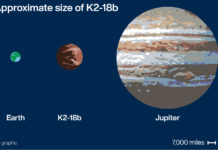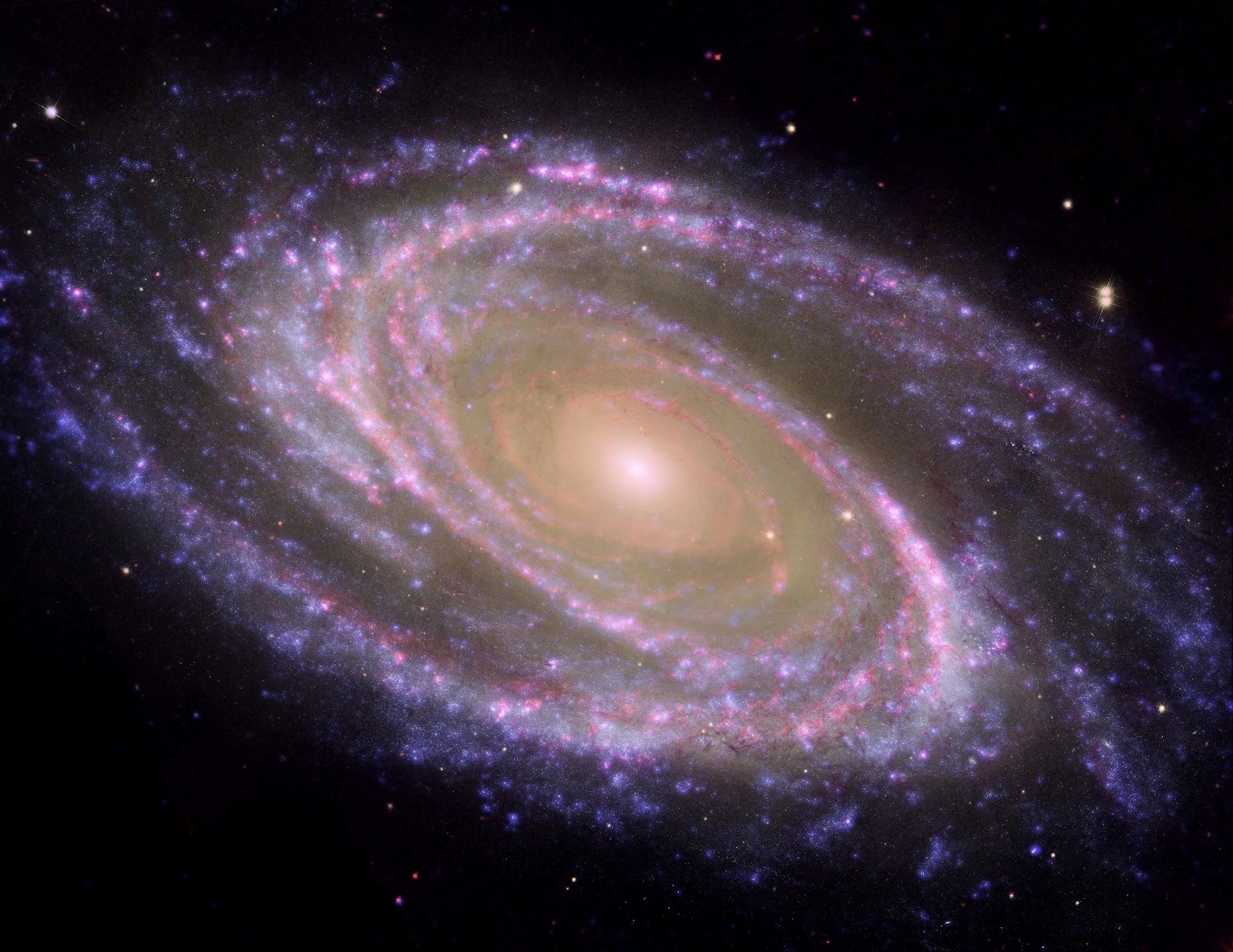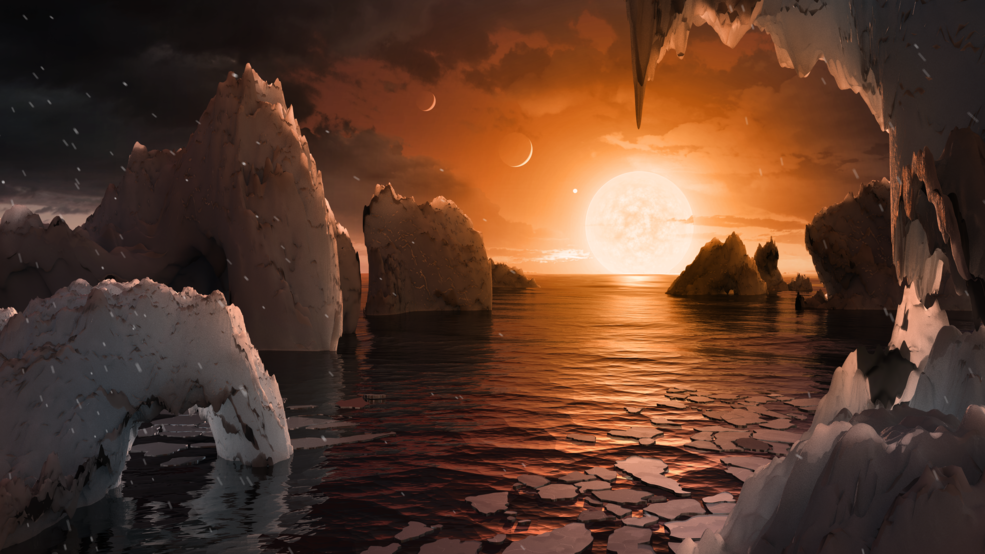Radio astronomers have released an image of 50-light-year long filament of star-forming gas in the stellar nursery of the Orion Nebula.
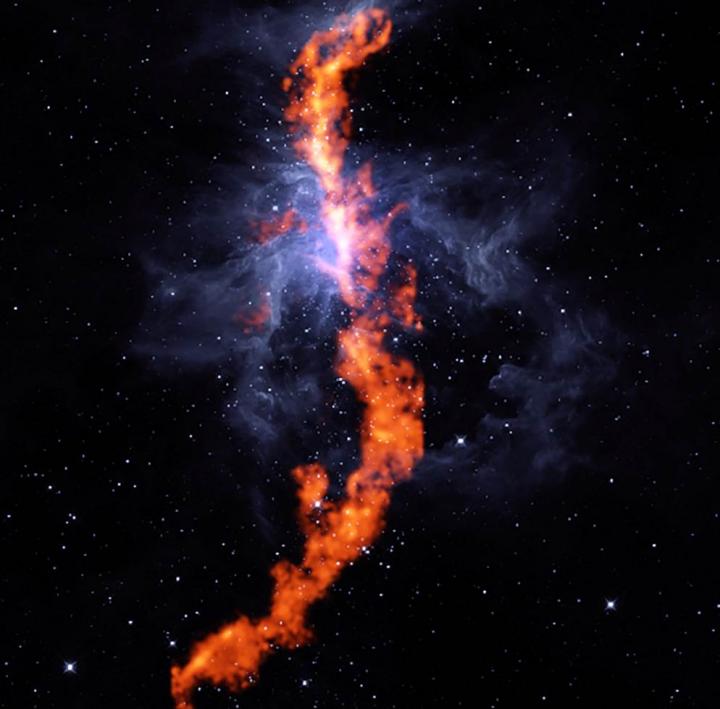 Astronomers have released an image of a vast filament of star-forming gas, 1200 light-years away, in the stellar nursery of the Orion Nebula.
Astronomers have released an image of a vast filament of star-forming gas, 1200 light-years away, in the stellar nursery of the Orion Nebula.
The image shows ammonia molecules within a 50-light-year long filament detected through radio observations made with the Robert C. Byrd Green Bank Telescope in West Virginia. That image is combined with an image of the Orion Nebula–an object familiar to amateur and professional astronomers alike–taken with NASA’s Wide-field Infrared Survey Explore (WISE) telescope.
 “We still don’t understand in detail how large clouds of gas in our Galaxy collapse to form new stars,” says Rachel Friesen, one of the collaboration’s co-Principal Investigators and, until 31 May 2017, a Dunlap Fellow at the Dunlap Institute for Astronomy & Astrophysics, University of Toronto.
“We still don’t understand in detail how large clouds of gas in our Galaxy collapse to form new stars,” says Rachel Friesen, one of the collaboration’s co-Principal Investigators and, until 31 May 2017, a Dunlap Fellow at the Dunlap Institute for Astronomy & Astrophysics, University of Toronto.
“But ammonia is an excellent tracer of dense, star-forming gas,” says Friesen, “and these large ammonia maps will allow us to track the motions and temperature of the densest gas. This is critical to assessing whether gas clouds and filaments are stable, or are undergoing collapse on their way to forming new stars.”
Also Read: Is There Life Outside Earth? Nasa has discovered seven earth-like planets
The image accompanies the first release of results from the collaboration’s Green Bank Ammonia Survey (GAS), published in the Astrophysical Journal. The collaboration’s other co-Principal Investigator is Jaime Pineda, from the Max Planck Institute for Extraterrestrial Physics; the team also includes astronomers from the University of Toronto’s Department of Astronomy & Astrophysics and Canadian Institute for Theoretical Astrophysics.
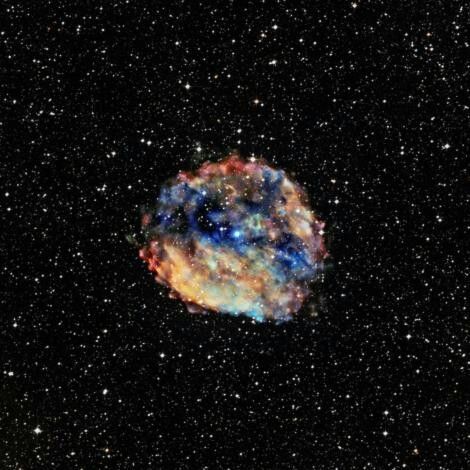 The goal of GAS is to survey all the major, nearby star-forming regions in the northern half of the Gould Belt — a ring of young stars and gas clouds that circles the entire sky and runs through the constellation Orion. The survey will eventually provide a clearer picture over a larger portion of the sky of the temperatures and motions of gas within these dynamic stellar nurseries.
The goal of GAS is to survey all the major, nearby star-forming regions in the northern half of the Gould Belt — a ring of young stars and gas clouds that circles the entire sky and runs through the constellation Orion. The survey will eventually provide a clearer picture over a larger portion of the sky of the temperatures and motions of gas within these dynamic stellar nurseries.
Read More Science & Technology Reports:
- India Joins `Fat Boy’ Club, Fires heaviest Rocket Into Space
- A Glow Stick That Detects Cancer
- Indian Scientists Develop Drones With Human Brain As Command Centre
- New system transmit digital data 10 times faster than 5G
- Womb Transplant: Pune Creates Medical History
- You Are Being `Sold’ For Less than a Rupee
- How About Tasting A Virtual Biryani Through Sensors?
- Dubai To Introduce Self-Flying EHang Air Taxis in July
- Artificial chicken grown from cells gets a taste test—but who will regulate it?
- 32 Million Yahoo Accounts Breached
- WhatsApp to stop working on these phones, iPad in 2017


































